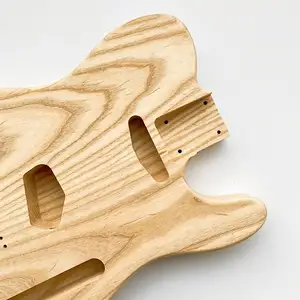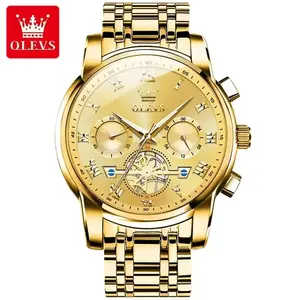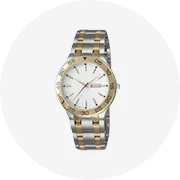Popolare nel tuo settore






Basso chitarra elettrica effetto pedale Multi Effect processore pedali accessori per chitarra
11,17 € - 13,03 €
Ordine minimo: 2 parti






Prezzo di fabbrica corpo per chitarra elettrica vuoto corpo per chitarra TL Ash incompiuto per kit di chitarra tl
41,87 € - 46,43 €
Ordine minimo: 10 parti



Alta qualità all'ingrosso 39 pollici chitarra classica fabbrica vendita diretta abete rosso Top mogano posteriore lucida chitarra classica per la vendita
24,59 € - 49,81 €
Ordine minimo: 5 parti







60ML strumento musicale olio polacco pianoforte olio per la cura brillante olio per la pulizia della chitarra
0,3443 € - 1,49 €
Ordine minimo: 100 parti







All'ingrosso selettore Pickup 3 vie LP chitarra interruttore a levetta con punta bianca/nera/gialla per chitarra elettrica
Pronto per la spedizione
0,7815 € - 0,9304 €
Ordine minimo: 10 parti
Spedizione per pezzo: 4,39 €







Chitarra Le Paul Gibs Standard anni '50 Heritage Cherry Sunburst
650,29 € - 743,32 €
Ordine minimo: 2 parti




Reliquic TL Boutique chitarra elettrica in acero tastiera 1979 musica uomo sciabola basso Olympicc chitarra bianca spedizione gratuita stock
93,04 € - 186,07 €
Ordine minimo: 1 satola






5150 Heavy Duty heritage chitarra elettrica Van Halen hat hat heritage guitar ontano corpo Canadian acero collo
139,55 € - 232,58 €
Ordine minimo: 2 insiemi






Basso classico, basso cavo a sei corde, prodotti di alta qualità
93,04 € - 186,07 €
Ordine minimo: 1 sacco






Storica chitarra elettrica adesivi Paisley rosa cow osso stringa cuscino coreano hardware all'ingrosso e al dettaglio
158,16 € - 186,07 €
Ordine minimo: 1 satola






Basso classico, basso cavo a sei corde, prodotti di alta qualità
93,04 € - 186,07 €
Ordine minimo: 1 sacco






RELIC TL Boutique Boutique chitarra elettrica in acero tastiera spedizione gratuita stock
93,04 € - 186,07 €
Ordine minimo: 1 satola





Kit chitarra elettrica Eujgoov a forma di C collo chitarra principiante Set sicamoro chitarra con accordatore e amplificatore per principianti
93,04 € - 186,07 €
Ordine minimo: 1 sacco






Cuscino elettrico per chitarra elettrica in metallo rosso con osso di mucca P90 pickup all'ingrosso e al dettaglio spedizione gratuita
81,87 € - 186,07 €
Ordine minimo: 1 satola






Storica chitarra elettrica adesivi Paisley metallo rosso cow osso stringa cuscino coreano hardware all'ingrosso e al dettaglio
93,04 € - 186,07 €
Ordine minimo: 1 sacco






Chitarra elettrica storica nero rosso cow bone stringa di colore colore corrispondente spedizione gratuita all'ingrosso e al dettaglio
61,41 € - 186,07 €
Ordine minimo: 1 satola






Storica chitarra elettrica in metallo rosso cow bone stringa cuscino coreano hardware all'ingrosso e al dettaglio spedizione gratuita
81,87 € - 186,07 €
Ordine minimo: 1 satola






Chitarra elettrica a F-Hole a 6 corde, vernice nera, tastiera luminosa, lunghezza della corda 527, cuore semivuoto
93,04 € - 186,07 €
Ordine minimo: 1 sacco






Storica chitarra elettrica tramonto colore mucca osso stringa cuscino all'ingrosso e al dettaglio spedizione gratuita
81,87 € - 186,07 €
Ordine minimo: 1 satola





Storica chitarra elettrica in metallo blu cow bone stringa cuscino coreano hardware all'ingrosso e al dettaglio spedizione gratuita
81,87 € - 186,07 €
Ordine minimo: 1 satola






Camicie a maniche hawaiane personalizzate Camisa Ropa Playera Crochet Calle Hawayana Camisetas t-shirt grafica stampata personalizzata per uomo
Pronto per la spedizione
0,9211 € - 1,86 €
Ordine minimo: 50 parti
Spedizione per pezzo: 1,06 €
Migliori categorie
Su chitarra patrimonio
Alibaba.com offre prodotti 23 chitarra patrimonio. È disponibile una vasta gamma di varietà di chitarra patrimonio, quali acero, tiglio. È inoltre possibile scegliere tra acero canadese chitarra patrimonio.
























